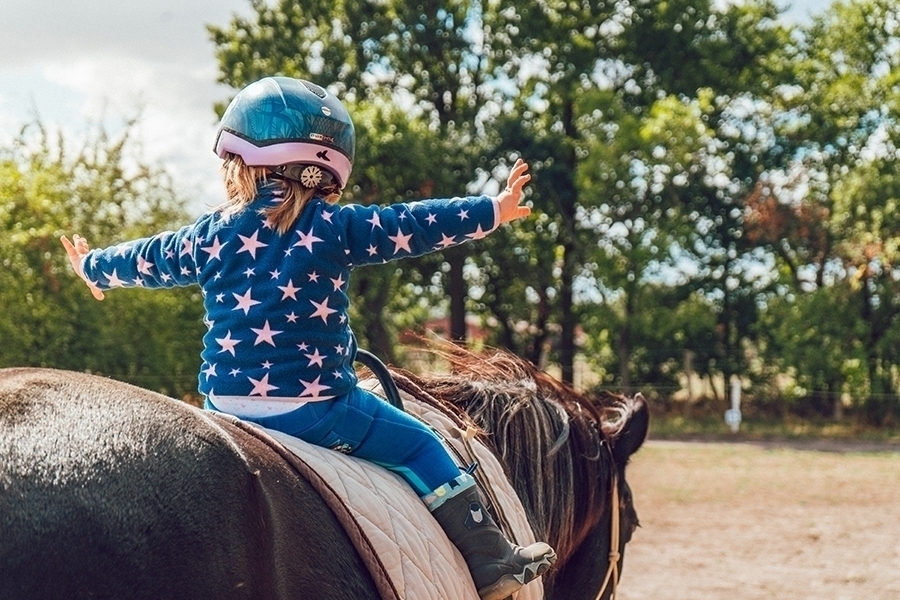
Horses are team players. They can’t help it – evolution demands it. Before we domesticated the horse, millions of years of evolution had shaped them into a herd animal that must play well in the group in order to live long enough to pass on its genes. A horse’s ranking in the herd hierarchy does not necessarily matter, but acceptance by the group is paramount. A lone horse is a dead horse.
As an owner or rider it is important to understand a horse’s innate imperative to “go along with the herd” and make sure that we are send clear and consistent messages during training.
I instruct amateur riders with their horse partners five days a week, and sometimes it feels like I’ve blindfolded two people who speak different languages and told them to dance as a couple. Who is the leader? Who is the follower? What are the dance steps?
Without a clear method of communication, things can rapidly lead to frustration for both rider and horse. Left to fester, this can have lasting consequences – the horse gets incorrectly labeled a “problem horse”, and/or the rider’s confidence diminishes which may then sour their love of these amazing animals.
The good news is that with a little bit of sensitivity and a focus on clarity, this frustration can be eliminated and the effects reversed. And when that is achieved, magic can happen.
I’ve amalgamated several different horse/rider teams into different examples of “problem horses”. What is the common theme with each pair?
The “stubborn” horse
Martha and her youngster are just getting together. He is young, but sensible. When Martha asks him to do something, she is very kind. She treats him like her older horse, who is a school master. When she asks him to trot and he steps out, she falls forward a little and pulls the reins because she is insecure riding a young horse. He continues to trot at a slow restricted pace, gradually slowing down.
After several rides, the youngster starts refusing to trot, and as a result Martha starts to be more insistent and taps him lightly with the whip, accepting very little effort or response on his part. Soon, every time Martha asks for a trot, the horse plants his feet, pins his ears and cow kicks.
The horse is labeled “stubborn”.
The “argumentative” horse
Jenny and her horse are a new team. She graduated from her old reliable mare to a younger gelding because she did not want to deal with “mare moods” anymore. They start out well, and she is a confident amateur rider. But as time passes, the horse begins to refuse to go. When she kicks him, she shortens her reins and tries to hold him round. Soon, he is fussing in the bridle. He ignores any request to go forward with energy, and eventually is refusing to pick up the canter. When Jenny is trotting and tries to aid him for more energy, he reluctantly hops into a canter having no idea what the right answer is.
He is labeled, “argumentative”.
The “persnickety” horse
Lara rides a mare. Her horse is easy to get along with, but a little electric. Like many mares, she can be brittle through her back. When riding in a lesson, Lara is instructed to supple the horse through many different exercises. Her mare is waiting for direction, to be led. Meanwhile, Lara is worried that she will over aid, or that her aids will not be invisible and that she will look unskilled, she never effectively makes anything happen. Her mare gets annoyed. She’s not sure who is supposed to be in charge. She pins her ears and shakes her head. She breaks gait continually.
She gets labeled “persnickety”.
The “old and dull” horse
Kate rides an older school master who has seen and done everything under the sun. Kate is a dedicated amateur who rides several times a week. She tries hard, but is still in the process of learning to control her body. When her horse trots forward and her hands bounce up and down, her legs constantly, unintentionally, bump him, and her position and balance in the saddle are all over the place. The horse takes it like the good boy he is for a while, but soon becomes unresponsive. He doesn’t react to Kate’s aids and becomes increasingly difficult to ride because he is ignoring her.
He is labeled “old and dull”.
Sending the wrong messages
As you can probably guess, the common theme with all these “problem horse” scenarios the one in the saddle, not the one wearing it. Remember, horses are genetically wired to go along with the herd. They are especially sensitive to the signals being given to them, and will quickly adapt their behavior in an attempt to respond appropriately. When the horse repeatedly gets conflicting messages from the rider despite its efforts to find a correct response, confusion and frustration rapidly set in.
Martha is telling her horse, “Go”, but then as soon as he does, unintentionally tells him, “No, don’t go”. Which is it? Jenny also tells her horse to “Go”, but then she tells him, “No, don’t go THAT way”, repeatedly. She pulls back trying to create roundness, or lightness or whatever during every transition. Go or don’t go; which is it?
Lara doesn’t give her mare conflicting information; she gives her nothing. The mare is waiting for direction. She is frustrated because of the lack of clear leadership and feels insecure. Who is in charge? Is Lara the boss or not?
Kate confuses her horse with an abundance of unintentional noise. In self-preservation, he tunes her out. But then when she uses an aid intentionally, he doesn’t get the signal because he is tuned out. Kate’s body is constantly telling him something that is unimportant. When do her aids mean something? Is she communicating or just bouncing around?
Taking a step back in order to move forward
In each of the above scenarios the riders love their horse and want to ride well and bond with the animal. I have complete empathy with each of them, and have been all of them at one time or another. I know the fear a rider gets when they feel they are “loosing the connection” with the horse, and understand how this can then cause less experienced trainers and riders to use aggressive training methods out of desperation. Sadly this rarely works out well, since the root cause to the problem is never addressed. Inevitably the horse gets a label that will continue to follow it through its career.
This is why it is important to take a step back, evaluate the situation and take responsibility. Does the rider lack clarity? Is she really communicating and following through with her intentions, or is she confusing a horse who is desperately trying to understand? If wrong messaging is the issue, how do we correct this?
The answer is: keep working. You’ll get there. In Part 2 we’ll look at a road to achieving clarity.

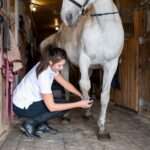

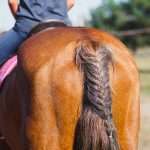

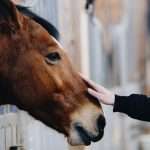

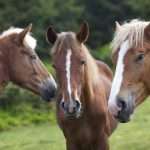


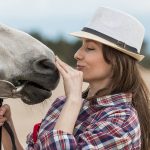
Horse owners should save this information since they will have to use it daily. It will probably take some time for these actions to become memorized.
A set of actions that your horse is sure to find refreshing.
hope to win
Amazing how these animals have different personality traits like us humans.
Problem horse scenarios are also important to take note of and to work on.
Love this
lo quiero…
Kindness
Great tips. Thanks for sharing.
you have great idea on horse
Great article
There was alot of time put into this information very valuable ylto horse owners
Just like people have different personalities, so do animals like horses. Interesting article.
“The air of paradise is the one that blows between the ears of a horse”
Interesting informations to know! thanks for sharing.
Cool
Great ideas!
cool
This article is so funny, love it!
very cool actually
Thank you- love how you explain the different personality of horses… of course every one is different!
I’ve never ridden a horse before to be honest.
Ay! Cuantos tipos de caracteres de caballo 😮 hay que tener psicología para educarlos
Intriguing start, looking forward to second part of this story.
This was a great read. I definitely agree that the trainer is the one that has to adjust; not just with horses, but virtually any animal. They feed off of our energy and signals. It’s such an important lesson, so thank you for taking the time to write this and share your knowledge!
Thank you. It’s been helpful to get my brain into speaking horse through my body language.
You can tell how much you love horses! Love these articles!!
Very cool,
Great information
these labels are quite so true lol.
Intriging.
Super conseil merci beaucoup.
Love this article
I had no idea they were so smart never got to own one
take it slow
wow great advice
Great article for starters! Kudos!
Boning with your horse is so rewarding but yet so hard at the same time.
Great info!
Wow, thah is new for me
Like most animals, they really get their behavioral cues from us.
There is really so much that I didn’t know. Thanks.
Some great ideals
Knowing your horse inside and out, it takes team work, thanks for the info.
We can find really useful info here. Thanks a lot!
good reminder that we say more to our horses without actually saying anything at all
Horses, like people have problematic behaviors.
Great article!
Such an interesting read! We forget that horses are just like people with different personalities and quirks
This is interesting.
Great, thank you
good idea
Very amazing information i had not a thought to a horses group heard mentality untill now very interesting facts! I am now understanding these beautiful creatures better!
Some very good advice.
I just love this! Great tips x
Just like us humans horses have characteristics we are not that different
Really Enjoyed!
Very useful article.
Thank you for sharing. It’s always great to achieve clarity..
Horses are not perfect and need a lot of love and training. All of these tips are pertinent to my horse’s personality and behavior!
I agree. Address the root cause
I read part 2 first and now it makes more sense.